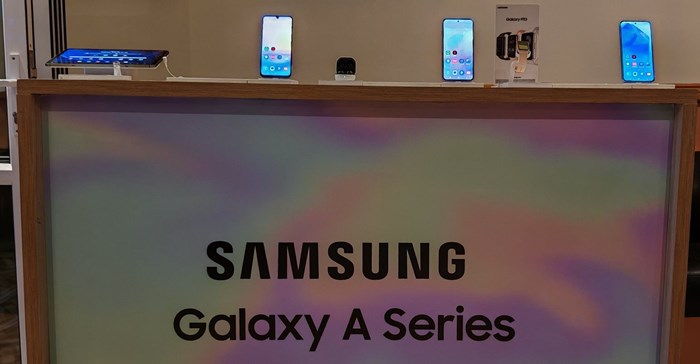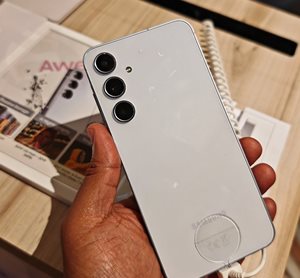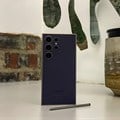Samsung goes back to competitive roots with A-series

Those three flagship devices were also the Korean tech giant’s first devices with more premium metal frames metal frames, and the media was also introduced to the plastic builds of the budget-friendly Galaxy A3 and A5.
Galaxy Alpha was a strategic move to produce a premium handset capable of competing with the iPhone 6 and 6 Plus, which increased the screen size of the iPhone beyond 4-inches and effectively negated Samsung’s marketing advantage.
But with the increased price of materials, it left the Galaxy devices vulnerable to being undercut – hence the need to deliver premium aesthetics at a cheaper price point.

Back in metal
The 2024 A-series variants is the first time an A5 designated Galaxy handset gets a metal frame, with the Armour Aluminium also being milled to resemble the unique contours of the original Galaxy Alpha.
That R11,000 retail price also allows Samsung to undercut the Apple’s entry-level iPhone SE by R1,500. The only premium feature the A55 yields to its rival is wireless charging, but more than makes up for that deficit with a larger, higher quality (OLED vs LCD) screen.

Samsung is aware of its global fight against the iPhone in the youth market with US-centric media luring the teenage demographic to Apple products and has managed to bring a true competitor to market at the price.
What is lacking, however, is the #GalaxyAI features that headlined the Galaxy S24 series launch and has made its way to older S and Z devices.
That means no Circle to Search for an arbitrary reason of Google not wanting to share it with cheaper devices.
New generation
A big driver behind the A-series success in South Africa has been partnerships with local celebrities.
Casper Nyovest has been a linchpin of the A-series marketing story and now Samsung South Africa have added Youngsta CPT and Kamo Mphela to the brand ambassador roster to appeal to a younger audience.
Finally… I can say this… tonight, @SamsungMobileSA has welcomed me to the family as the next generation of Awesome!!!! Yes… I am now an ambassador and part of Team Galaxy. Thank you for welcoming me to the family @casspernyovest… let’s go!!!! #AwesomeIsForEveryone
This… pic.twitter.com/GpXEUitM9U
— KIKI ����♀️ (@Kamo_mphelaxx) May 3, 2024
While generating high volume sales on the back of the R7,000 Galaxy A35 retail price shouldn’t prove too difficult given Samsung’s absolute market dominance in South Africa, there is another compelling device that could kill off the Chinese competition.

Samsung has skewed wearables towards the >R5,000 end of the market for years and now dropped a compelling budget entry. The Samsung Galaxy Fit 3 is an all-out assault on the sub-R2,000 fitness wearable/smartwatch segment where Huawei still commands a large lead.
Fit 3 matches the Huawei Band 9 on price, features and looks and delivers more seamless integration into the Google services ecosystem.
The ultimate trick, though, is that the Fit 3 is not supported on iPhone, which will only make the Galaxy device ecosystem purchasing decisions easier in the future.
It’s Samsung’s world
Local brand representatives seemed more upbeat at the A-series launch and Samsung’s return to the top step of global smartphone sales podium is the easy answer.
Judgement will be reserved until after the Google and Apple developer conferences, though, because both tech firms seem poised to make major announcements that could change the smartphone landscape.












